The Cleansing of Mosul
As the focus has shifted to Palmyra, relatively little media attention has been paid over the past several months to ISIS’ continued destruction of cultural sites in and around Mosul. Nevertheless, ISIS’ campaign to eliminate anything it perceives as being opposed to its ideology has continued. Over the past few months, many structures previously left untouched have been destroyed.
The Southwest Palace of Sennacherib
Situated atop the ancient tell of Kuyunjik, the Southwest Palace was one of the first buildings of Nineveh to be excavated by Austen Henry Layard in 1847. The palace contained the famous Lachish siege reliefs now preserved in the British Museum.
Over a hundred reliefs were left in situ and the palace was preserved as a museum. Some of the reliefs were broken or looted in the 1990s.

Left: Image taken by Digital Globe/ASOR on May 2, 2016 showing the Southwest Palace missing its roof but with reliefs still in place. Right: Image taken by Digital Globe/ASOR on May 9, 2016 showing the reliefs are gone and most internal walls have been destroyed.
The palace had not been touched by ISIS until sometime between April 1 and May 2, when the metal roof protecting the remains from the elements was removed. After this, the walls separating various rooms were torn down, the pillars which supported the roof were removed. Satellite photos show vehicle tracks, indicating material was hauled out by the truckload. In the most recent images few reliefs can be seen and it appears they were either taken away or destroyed.
The Southwest Palace was one of two preserved Assyrian royal palaces formerly open to visitors, along with the Northwest Palace of Ashurnasirpal II at Nimrud. The Northwest Palace was destroyed by ISIS in April 2015.
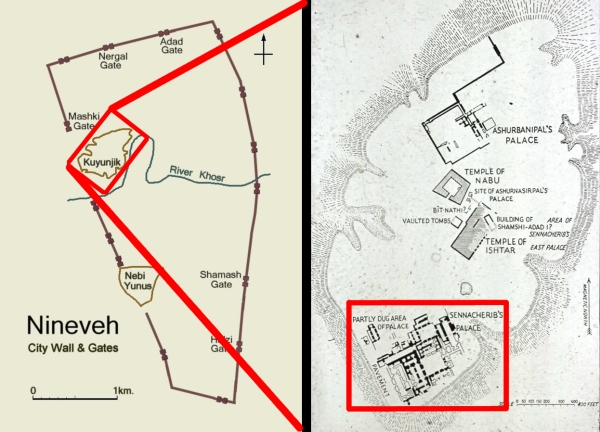
Map showing Kuyunjik’s location within Nineveh and the Southwest Palace within Kuyunjik. (Wikimedia/UNC)
The City Gates of Nineveh
Nineveh from the reign of Sennacherib onwards featured fifteen major gates in the city wall. Each one was a monumental building in its own right, often featuring decorative reliefs and large lamassu statues.
The gates have been the target of numerous excavations. Several of them have been reconstructed in modern times along with sections of the city walls.
ISIS already destroyed the lamassus standing inside the Nergal Gate in February 2015, at the same time as they destroyed the artifacts in the Mosul Museum.
On April 10, ISIS destroyed the reconstructed Mashki Gate and its associated walls with bulldozers and later released propaganda photos online captioned simply “The demolition of idolatrous archaeology in the city of Mosul.” Satellite photos obtained by ASOR showed the gate has been completely razed and no trace of it remains.
On April 14 they also destroyed the Adad Gate. Its destruction was revealed through satellite photographs obtained by ASOR as well as photographs on the ground obtained through clandestine measures.
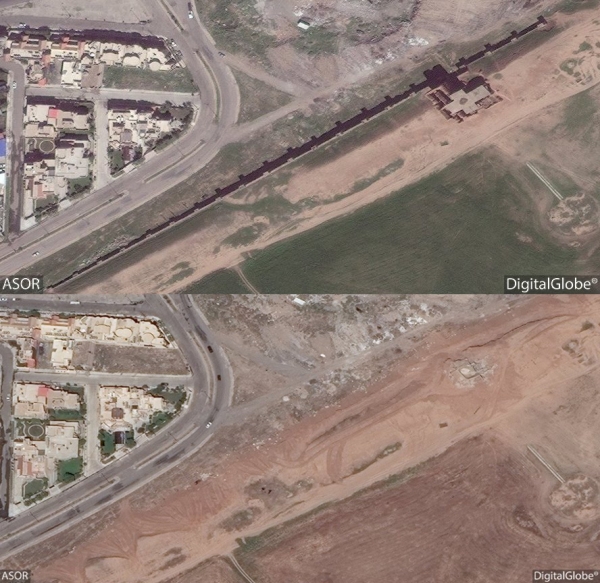
Top: Satellite photo obtained by ASOR on April 1, 2016 showing the Adad Gate and reconstructed city wall intact. Bottom: Photo dated May 2, 2016 showing the Adad Gate and city wall have been completely razed and the land cleared.
As the gates and the walls are modern reconstructions, it is not immediately clear how much damage was done to ancient remains by these actions.
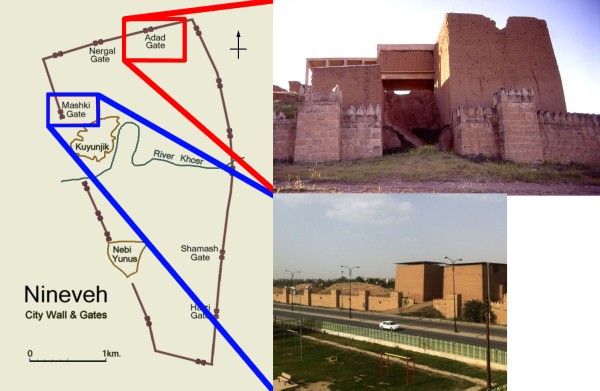
Map showing the locations of the Adad and Mashki gates within Nineveh. (Wikimedia/Wikimedia/Wikimedia)
Tunneling in Ancient Nineveh

Satellite photograph obtained by ASOR showing evidence of tunneling in Nineveh. (source)
In addition, ASOR has identified several locations in the ancient city where tunnels are being dug into the side of the tell. This technique has also been used at the tells of Qara Tepe and Khidr Alyas near Tal Afar. The tunneling is not visible from satellite photos and can only be identified by the growing backfill piles.
Archaeological looting is typically conducted by digging numerous pits on the surface in order to overturn as much soil as possible. Digging from the side minimizes the amount of soil being turned over, which would seem to reduce the chances of finding a valuable artifact. While there may be other motives to dig this way such as concealment, there would seem to be little reason to conceal digging if ISIS has authorized it. This raises the possibility that the digging may be being conducted for other purposes such as the construction of military bunkers.
The Latin Church
The Iraqi news outlet Al-Baghdadia was first to report on April 25 that the historic clock tower of the Latin Church in Mosul had been destroyed. The story was quickly picked up by the Telegraph and spread from there to other news outlets.
The tower was built in 1873 by the Dominican monks who also built the Latin Church. Its construction was financed by the Empress Eugenie, the wife of Napoleon III.
As of yet there is no hard evidence as to the status of the tower. No photos have surfaced to confirm its destruction. Further clouding the issue, the destruction of the tower was first reported this past September and was said to have taken place in February 2015.
The clock tower has been the target of attacks before. On November 1, 2006 a bomb exploded outside the entrance to the Latin Church. No one was killed in the attack, but the violence caused the monks to flee the city for Arbil. On April 9, 2008 the tower was damaged by a car bomb which targeted a passing police patrol. Two people were killed in that attack and ten were wounded.
Mosul War Cemetery

Plan of the Mosul War Cemetery. (Commonwealth War Graves Commission).
Satellite photographs taken in August 2015 surfaced this past March. They showed that ISIS has completely demolished the British and Commonwealth war cemetery in Mosul.
The cemetery contains the remains of 191 British and Commonwealth soldiers killed in World War 1 and 145 who died in World War 2. Fourteen civilians are also buried there, including British consuls who died in Mosul. By nationality, 75 of the servicemen buried there are British, two are Australians and one Canadian. The rest of the total from both World Wars came from British India, many of whom were Muslims. Reports indicate at least 29 Polish soldiers may also be buried there.
The Mosul War Cemetery was reported to be in very poor condition prior to the beginning of the war in 2003, as is the case with most Commonwealth war cemeteries in Iraq. In 1998 the Polish Embassy reported that all of the tombstones had been smashed to rubble. However, photos taken in 2014 showed that two memorial obelisks were still standing at that time.
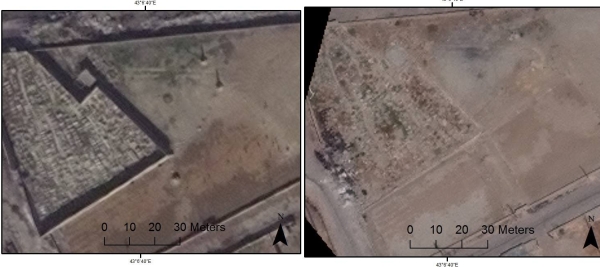
Left: Satellite photograph dated November 2013 of the Mosul War Cemetery. Right: Photo dated August 2015 showing destruction of the cemetery as well as adjoining cemeteries. (source)
The satellite photographs showed that ISIS leveled both obelisks as well as the Cross of Sacrifice. The walled cemetery to the upper left of the photograph was also destroyed, however it was not part of the Mosul War Cemetery.
Given the indiscriminate nature of this destruction it appears it was carried out as part of ISIS’ general campaign against graves which began in the fall of 2015.
Dair Mar Elia Monastery
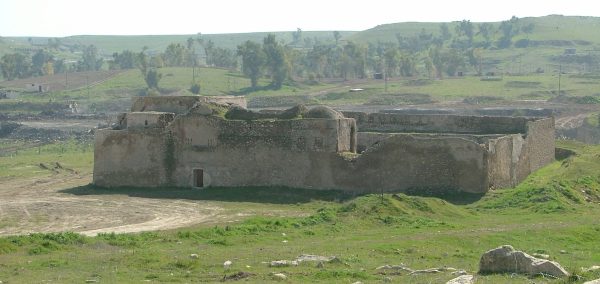
Dair Mar Elia as seen in 2005. (Wikimedia)
Situated just south of Mosul, the Monastery of St. Elijah (Dair Mar Elia) is one of the oldest monasteries in Iraq. Founded between 582 and 590 AD, the Chaldean Catholic monastery remained active until 1743, when the Persian king Nader Shah massacred 150 monks for refusing to convert to Islam. The monastery was not restored and fell into ruin.
In January 2016 the Associated Press obtained photographs showing that the monastery had been razed sometime between August 27 and September 28, 2014. Its destruction had not previously been reported, nor had it been publicized by ISIS in any way.

Top: Satellite photo dated March 31, 2011 showing Dair Mar Elia. Bottom: Satellite photo dated September 28, 2014 showing the monastery had been razed to the ground. (AP/Digital Globe)
Conclusions
The lack of publicity accompanying the destruction of many of the monuments discussed in this post cannot be ignored. First, it undercuts arguments that ISIS destroys sites solely to generate publicity in the media. Second, it raises the possibility that many other sites have been destroyed without being reported.
Finally, what it does suggest is that ISIS’s campaign of cultural cleansing in Mosul, so clearly designed to remove signs of any ideology opposed to ISIS, has continually expanded in scope from destroying Islamic sites, to ancient images, to replicas of ancient structures.
It could be argued that the drive for absolute ideological purity will always lead to a “scope creep” as it creates a thought process which is always searching for the next violation of the rules, and must continually find something to eliminate in order to keep functioning. Alternately, a more prosaic explanation could simply lie in the allocation of resources, priorities and scheduling. Regardless, while the news concerning cultural destruction in Mosul was quiet for many months, it can now be said that this was a deceptive quiet, and we can likely expect more news of destroyed cultural sites in the future.
Article © Christopher Jones 2016.
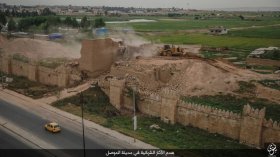

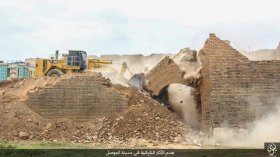

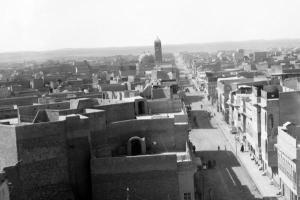







Reblogged this on Talmidimblogging.
Reblogged this on Nervana and commented:
Important read on ISIS destruction of Mosul’s historic monuments and the archaeological sites from ancient Assyria.
Terrible to see this. I imagine when Mosul finally is removed from ISIS hands we’re going to see that this is just only the scratch of the surface of their wickedness. So sorry to see this.
Reblogged this on Archaeology and Egyptology in the 21st century and commented:
A thoughtful and interesting post on the continuing destruction in Iraq.
Reblogged this on Ned Hamson's Second Line View of the News and commented:
How crazed are they? See how “we do this because we can” gone nuts and demonstrates not power but stupidity.